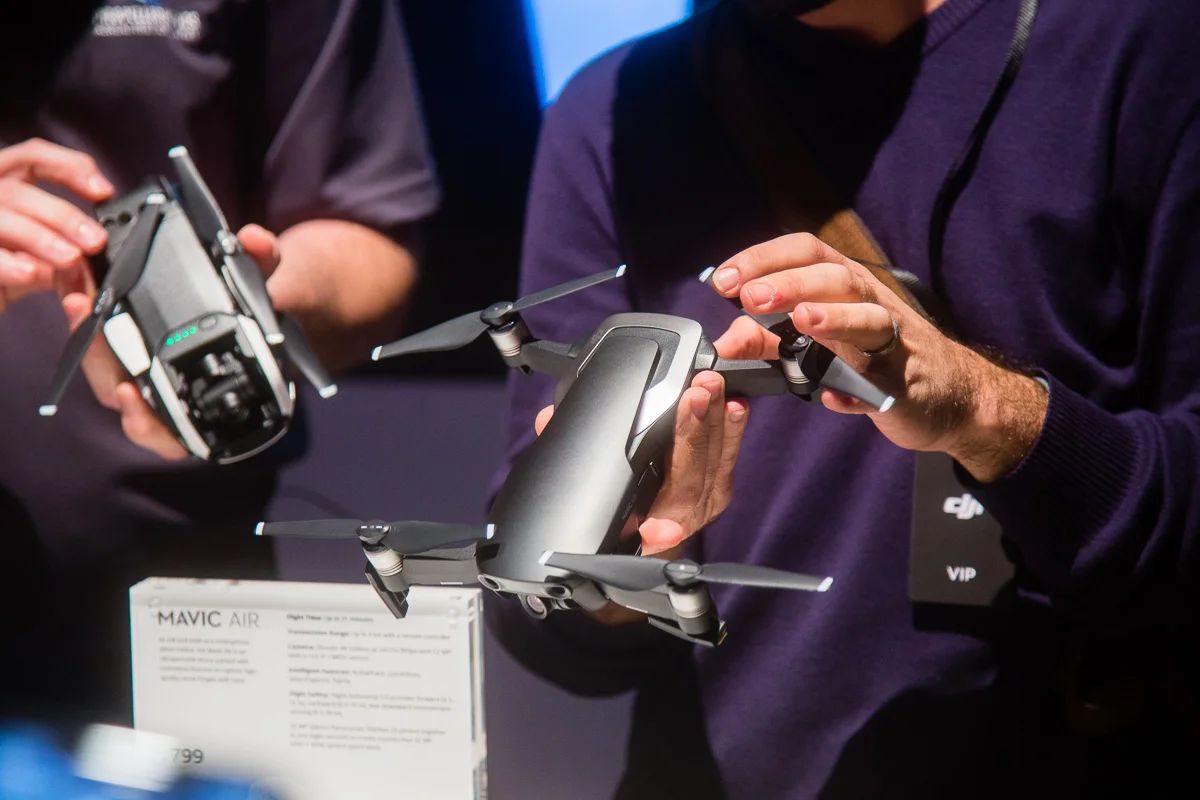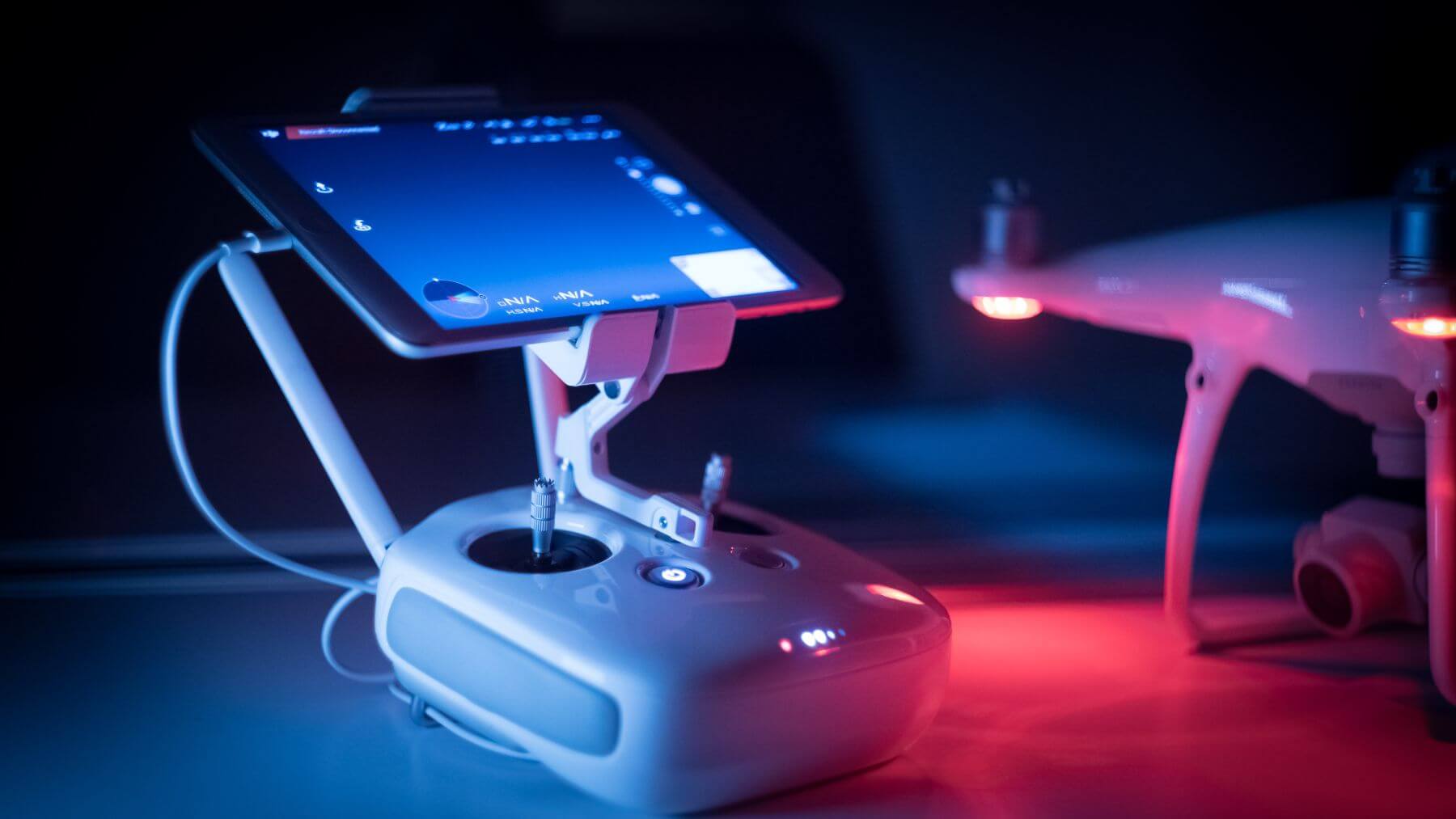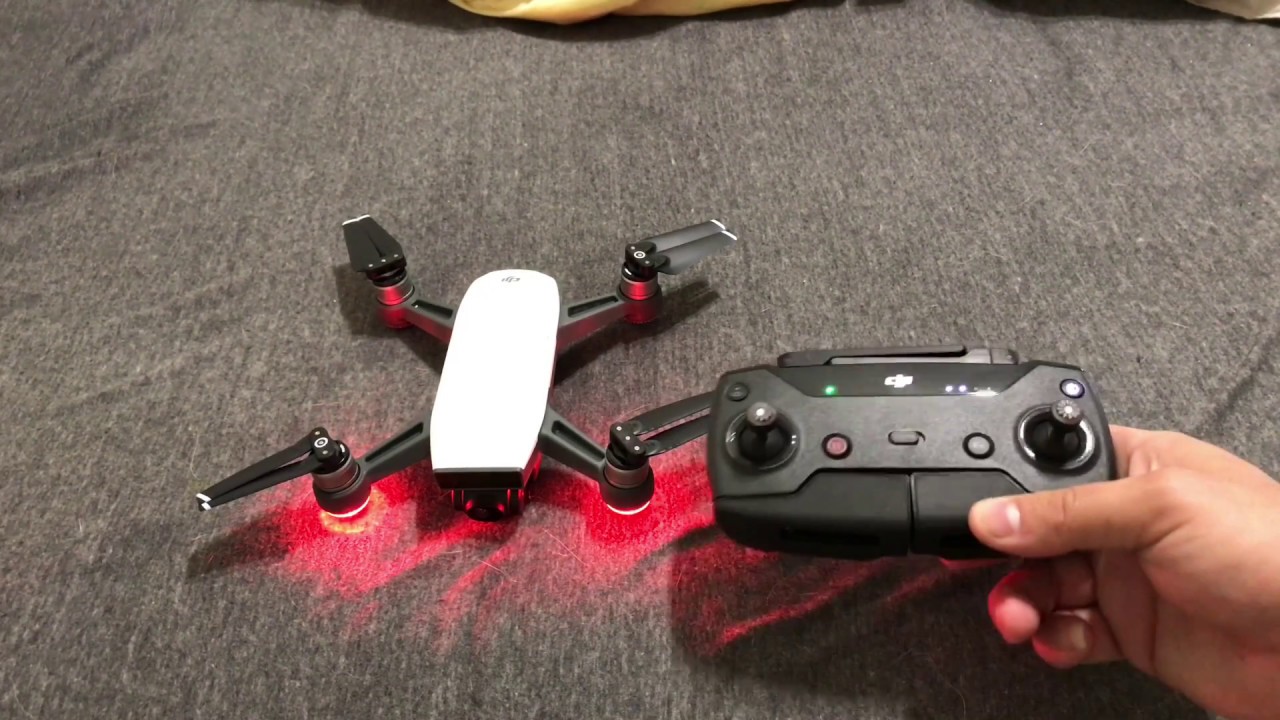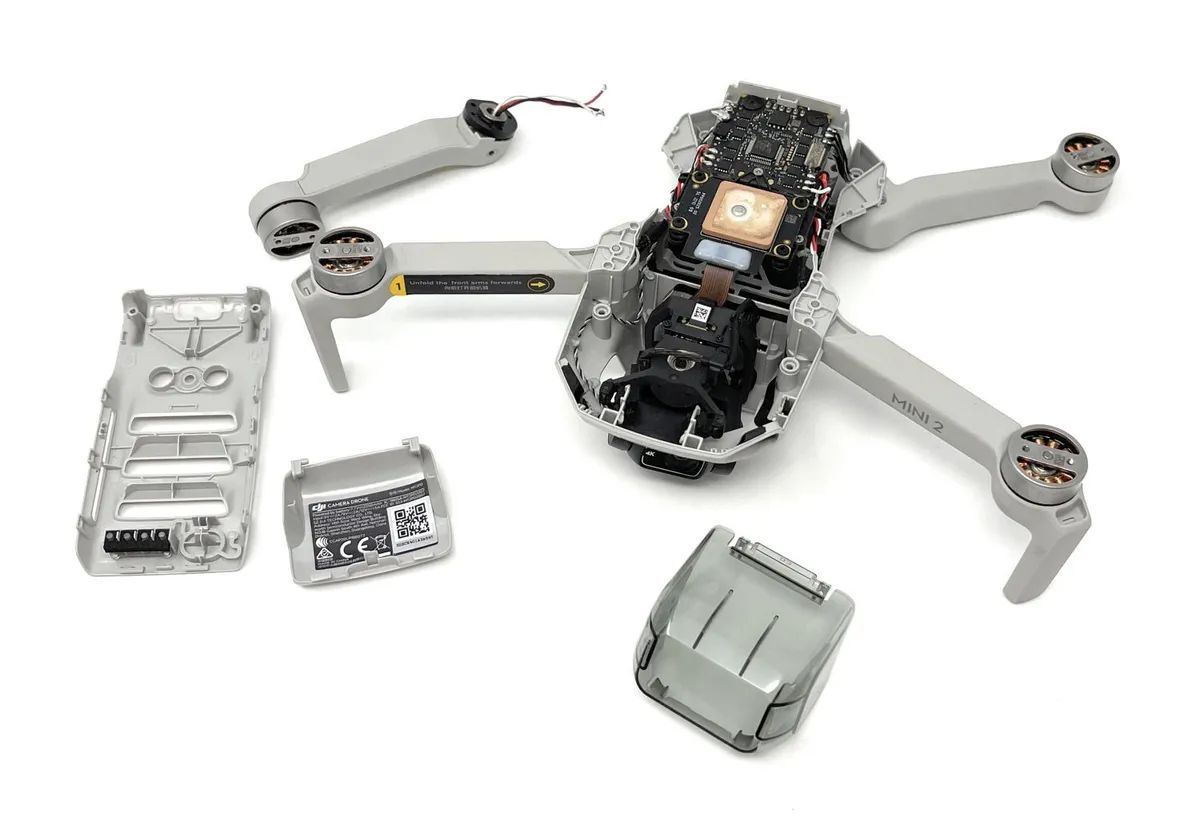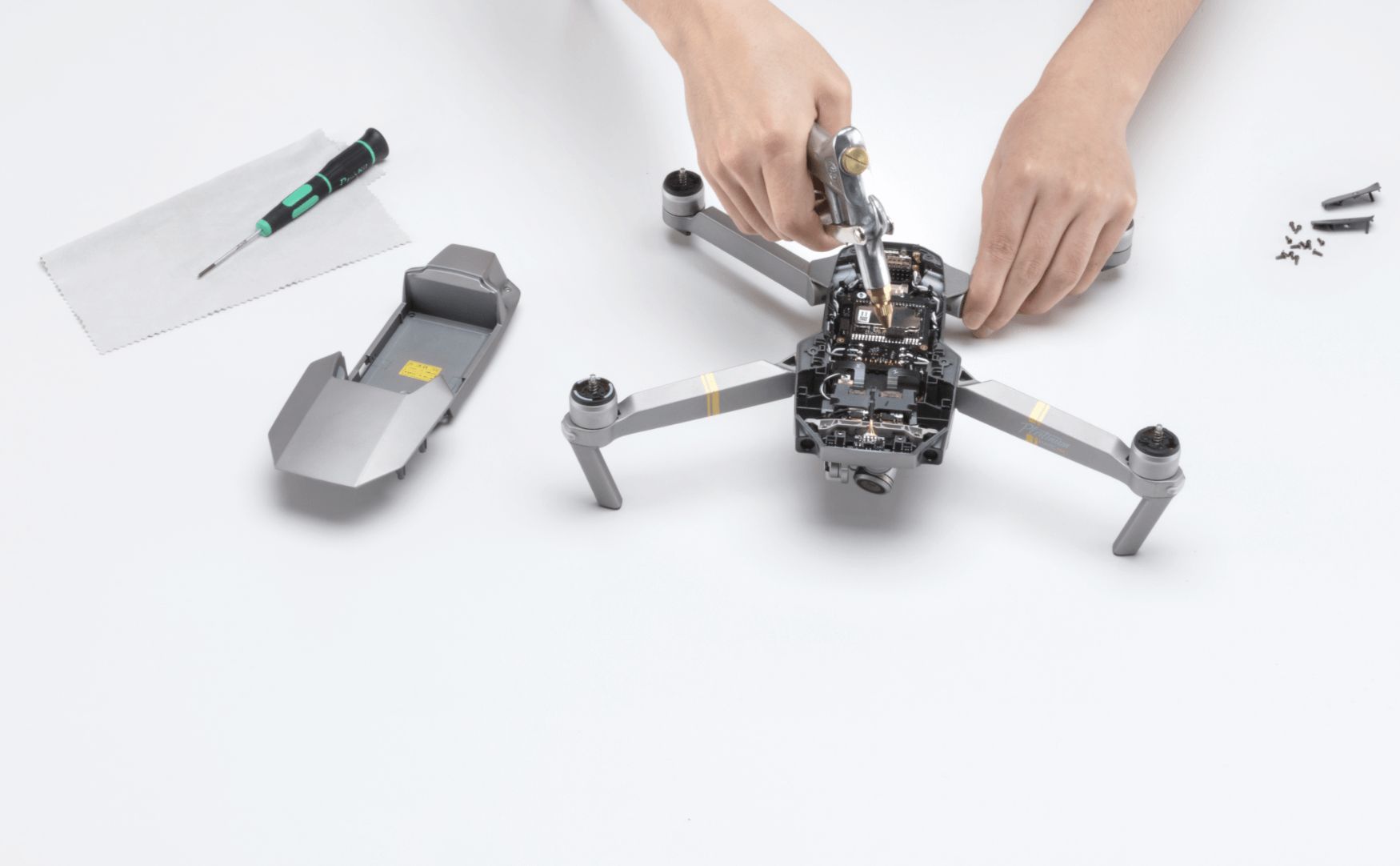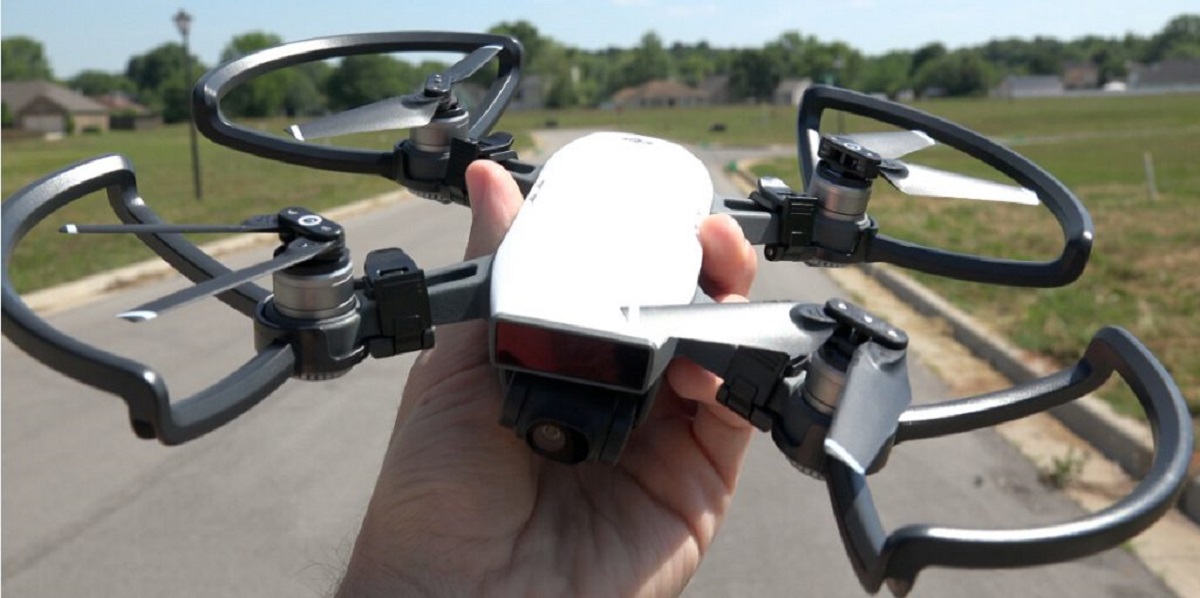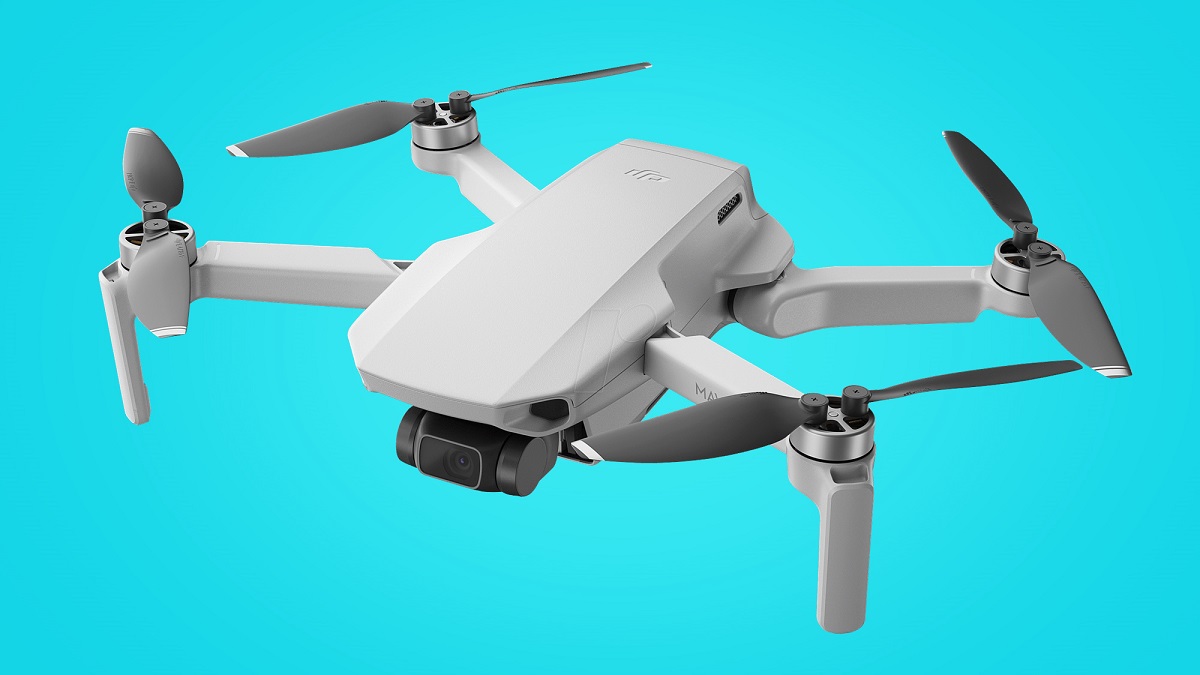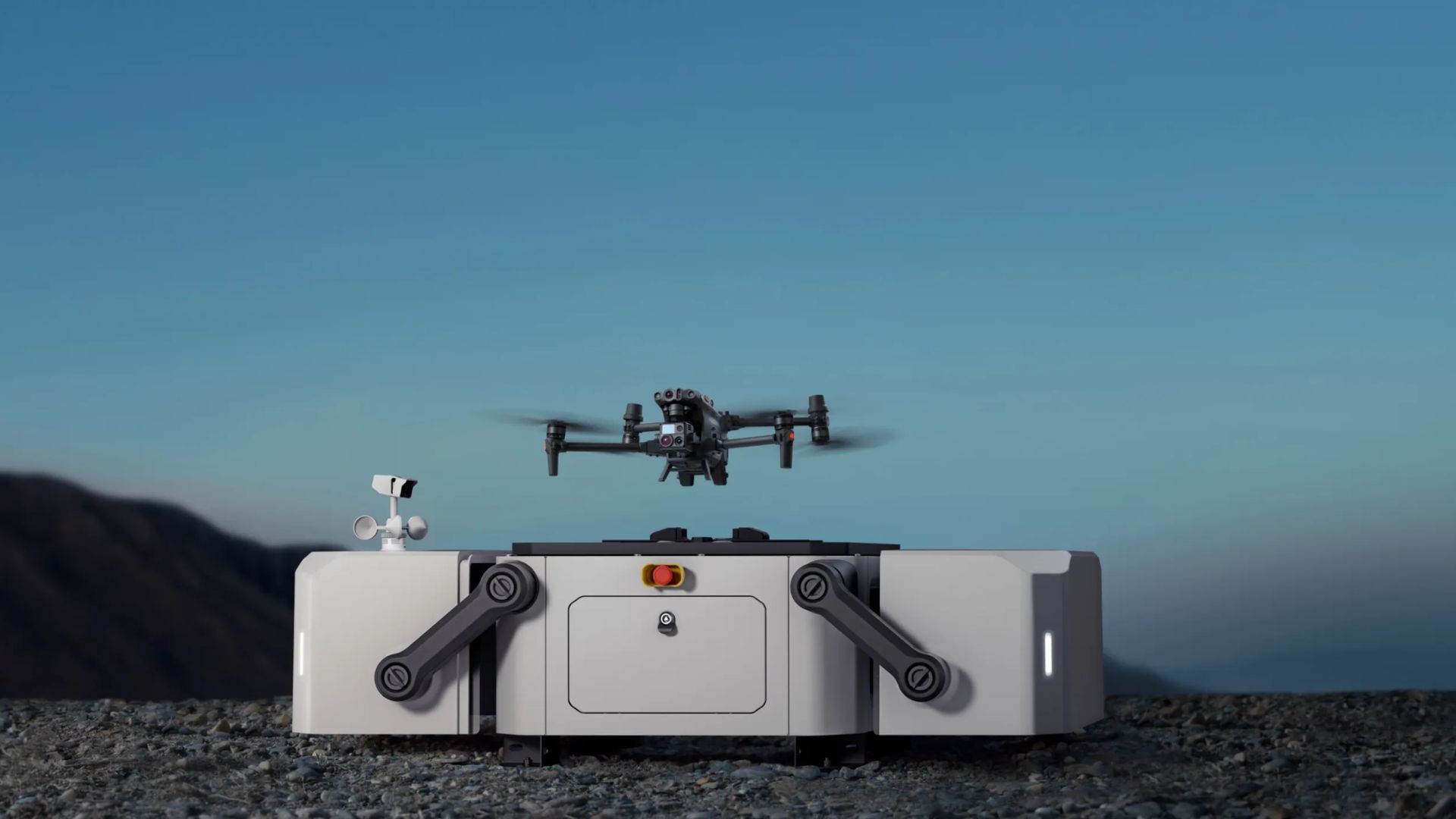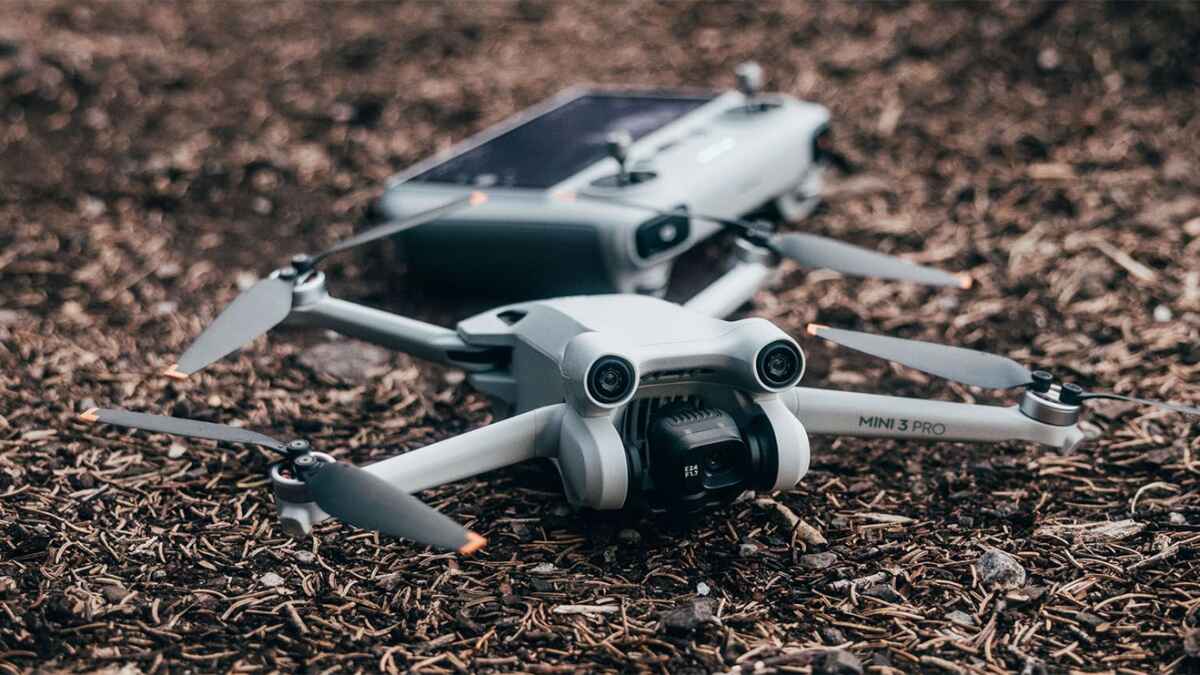Introduction
Welcome to the world of aerial photography and videography with DJI drones! As a DJI drone enthusiast, you may have experienced a frustrating issue – your DJI app keeps crashing. This can be a major setback when you’re eager to capture stunning footage or participate in a drone flight. But fret not; we’re here to help you understand the possible causes of this problem and provide troubleshooting steps to get your DJI app running smoothly again.
The DJI app serves as the control center for your DJI drone, allowing you to monitor live feeds, adjust camera settings, plan flight routes, and even edit and share your content. However, due to various factors, the app may crash unexpectedly, leaving you puzzled and wondering why.
While there may be different reasons behind the DJI app crashing, common culprits include insufficient device storage, outdated app version, compatibility issues, inadequate device specifications, interference from other apps, firmware or software issues, and problems with GPS or location services.
In this article, we will delve into each possible cause and discuss troubleshooting steps to resolve the issue. By following these steps, you can regain the stability and functionality of your DJI app, ensuring a seamless and enjoyable drone flying experience.
Possible Causes of DJI App Crashing
There are several potential reasons why your DJI app may be crashing. Understanding these causes can help you pinpoint the root of the problem and take appropriate steps to resolve it. Let’s explore some of the most common causes:
1. Insufficient Device Storage: One of the primary reasons for app crashes is limited storage space on your device. When your device runs out of storage, it can impact the performance of apps, including the DJI app. Ensure that you have enough free space on your device by deleting unnecessary files or transferring them to external storage.
2. Outdated App Version: Using an outdated version of the DJI app can lead to compatibility issues and instability. Developers regularly release app updates to address bugs, improve performance, and introduce new features. Make sure you have the latest version of the DJI app installed on your device to minimize the risk of crashes.
3. App Compatibility Issues: Compatibility problems can arise if the DJI app is not fully compatible with your device’s operating system or hardware. It’s essential to check the app’s system requirements and verify that your device meets them. Using an incompatible device or operating system may result in frequent app crashes.
4. Inadequate Device Specifications: DJI apps demand a certain level of device performance to run smoothly. If your device lacks the necessary specifications, such as RAM or processing power, it may struggle to handle the app’s operations, leading to crashes. Refer to the DJI app’s system requirements and ensure your device meets or exceeds them.
5. Interference from Other Apps: Sometimes, conflicts between the DJI app and other apps running in the background can cause crashes. Certain apps may occupy system resources or have conflicting processes, leading to instability. Quitting unnecessary apps or disabling them temporarily while using the DJI app can help resolve this issue.
6. Firmware or Software Issues: Outdated drone firmware or device operating system software can also be responsible for app crashes. Keeping your drone’s firmware and device software up to date is essential for compatibility and optimal performance. Regularly check for updates and install them to minimize the risk of crashes.
7. GPS or Location Services Problems: The DJI app heavily relies on GPS and location services to provide accurate positioning and flight control. If there are any issues with your device’s GPS or location services settings, it can lead to app crashes. Make sure your location services are enabled and functioning correctly.
By understanding these potential causes, you can effectively troubleshoot the crashing issue of your DJI app. In the following sections, we will provide detailed steps to address each of these causes and get your app back on track.
Insufficient Device Storage
One of the common causes of the DJI app crashing is insufficient storage space on your device. When your device’s storage is almost full, it can affect the performance of various applications, including the DJI app. Here’s what you can do to address insufficient device storage:
1. Delete Unnecessary Files: Take the time to declutter your device by deleting files that are no longer needed. Remove old photos, videos, and documents that are taking up valuable storage space. You can also consider transferring them to an external storage device or cloud storage service.
2. Clear App Cache and Data: Over time, app cache and accumulated data can consume a significant amount of storage space. Clearing the app cache and data for the DJI app can help free up storage and improve app performance. Go to your device’s settings, find the installed apps, locate the DJI app, and clear the cache and data.
3. Move Apps to External Storage: Some Android devices allow you to move apps to the external SD card. If your device supports this feature, consider moving less frequently used apps to the external storage to free up internal space for essential apps like the DJI app.
4. Use Cloud Storage: Another option to alleviate storage constraints is to utilize cloud storage services. Services like Google Drive, Dropbox, or iCloud allow you to store your files securely in the cloud, freeing up local storage on your device. Sync your files with the cloud storage service, and access them as needed.
By taking these steps to address insufficient device storage, you can create more space on your device and potentially resolve the crashing issue with the DJI app. It’s essential to regularly monitor your device’s storage and keep it clean to ensure optimal performance not only for the DJI app but for all applications on your device.
Outdated App Version
Using an outdated version of the DJI app can lead to compatibility issues and instability, resulting in app crashes. It’s crucial to keep your DJI app up to date to ensure optimal performance and access to the latest features and bug fixes. Here’s how you can address the issue of an outdated app version:
1. Check for Updates: Regularly check for app updates in the app store or marketplace specific to your device’s operating system (e.g., App Store for iOS or Google Play Store for Android). Developers often release updates to address bugs, improve stability, and introduce new features. If an update is available for the DJI app, install it to ensure you have the latest version.
2. Enable Automatic Updates: To ensure you always have the most recent version of the DJI app, enable automatic updates for apps on your device. This way, you won’t have to manually check for updates, and your device will automatically download and install them when connected to Wi-Fi.
3. App Store Settings: If you’re using an iOS device, you can set your device to automatically update apps by going to “Settings” > “iTunes & App Store” and toggling on the “App Updates” option.
4. Google Play Store Settings: For Android users, open the Google Play Store app, tap the menu icon (usually three horizontal lines) in the top left corner, go to “Settings,” and under “General,” select “Auto-update apps.” Here, you can choose to auto-update apps over any network or only when connected to Wi-Fi.
By regularly updating your DJI app, you not only ensure improved stability and compatibility but also benefit from the latest features and enhancements. Keeping your app up to date is a simple yet effective way to minimize the risk of crashes and enjoy a smooth and reliable experience with your DJI drone.
App Compatibility Issues
When it comes to app crashes, compatibility issues between the DJI app and your device’s operating system or hardware can play a significant role. It’s crucial to ensure that the DJI app is fully compatible with your device to avoid instability and crashes. Here’s how to address app compatibility issues:
1. Check System Requirements: Start by checking the system requirements for the DJI app. These requirements can typically be found on the app’s official website or in the app store. Ensure that your device meets the minimum requirements for operating system version, processor, RAM, and storage space. If your device falls short of the recommended specifications, it may lead to compatibility issues and app crashes.
2. Update Your Device’s Operating System: Keeping your device’s operating system up to date is crucial for compatibility with the latest apps. Check for system updates in your device’s settings and install any available updates. The latest operating system version may include necessary compatibility fixes that can resolve app crashes.
3. Contact App Support: If you have confirmed that your device meets the system requirements and you’re still experiencing compatibility issues, reach out to the DJI app’s support team. They can provide guidance on resolving compatibility problems or suggest alternative solutions.
4. Consider Incompatible Devices: Unfortunately, not all devices are compatible with the DJI app. If you’re using an older or less common device, there may be limited support or compatibility. In such cases, upgrading to a device that meets the necessary specifications is recommended to ensure a smooth and reliable experience with the DJI app.
By ensuring that your device is fully compatible with the DJI app, you can significantly reduce the risk of crashes. It’s crucial to check system requirements, update your device’s operating system, and reach out to support if needed. Compatibility plays a vital role in the performance and stability of the app, allowing you to enjoy uninterrupted drone flying and content creation.
Inadequate Device Specifications
Insufficient device specifications can be a significant cause of app crashes with the DJI app. The DJI app demands a certain level of device performance to function properly and handle the tasks associated with drone control and content creation. Here’s how to address the issue of inadequate device specifications:
1. Check the DJI App’s System Requirements: Start by reviewing the system requirements of the DJI app. These requirements can usually be found on the app’s official website or in the app store. Pay attention to specifications such as RAM, processor, graphics, and storage space. If your device falls short of the recommended specifications, it may struggle to run the app smoothly, leading to crashes.
2. Upgrade Your Device: If you find that your device doesn’t meet the necessary specifications, consider upgrading to a device that does. Look for devices with better processors, more RAM, and ample storage space. Devices specifically designed for media-intensive tasks, such as those with high-performance processors and dedicated graphics, tend to handle the demands of the DJI app more efficiently.
3. Close Background Apps: Having multiple resource-intensive apps running in the background can strain your device’s performance. Before using the DJI app, close any unnecessary apps that may be competing for system resources. This can provide the necessary processing power and memory for the DJI app to operate smoothly.
4. Limit App Permissions: Some apps on your device may consume significant resources even when running in the background. By limiting the permissions of these apps or disabling their ability to run in the background, you can free up resources for the DJI app. Check your device’s app settings and adjust permissions accordingly.
Having a device that meets or exceeds the necessary specifications for the DJI app is essential for a smooth and reliable experience. Upgrading to a more capable device or optimizing your current device’s performance can alleviate crashes caused by inadequate specifications. By ensuring your device has the required hardware and resources, you’ll be able to enjoy seamless control of your drone and create stunning aerial content without interruptions.
Interference from Other Apps
Interference from other apps running in the background can be a common cause of app crashes with the DJI app. Certain apps may consume system resources or have conflicting processes, leading to instability. Here’s how to address app interference issues:
1. Quit Unnecessary Apps: Before using the DJI app, close any unnecessary apps that may be running in the background. These apps can consume valuable system resources, such as processing power and memory, interfering with the performance of the DJI app. Quitting these apps can help alleviate potential conflicts and improve overall app stability.
2. Disable Background App Refresh: Many apps have a background app refresh feature that allows them to update their content even when not actively in use. While this feature can be useful for certain apps, it can also cause conflicts and drain resources. Disable background app refresh for non-essential apps to reduce the chance of interference with the DJI app.
3. Prioritize the DJI App: Some devices offer the ability to prioritize specific apps over others. Check your device’s settings to see if it has an option to prioritize certain apps or assign higher processing priority. If available, prioritize the DJI app to ensure it receives the necessary resources for smooth and uninterrupted operation.
4. Disable Battery Optimization: Some devices have battery optimization settings that restrict the background activity of apps to conserve power. While this can be beneficial for extending battery life, it may also affect the performance of the DJI app. Disable battery optimization for the DJI app to allow it to run more efficiently in the background.
By managing and minimizing interference from other apps, you can enhance the stability and performance of the DJI app. Closing unnecessary apps, disabling background app refresh, prioritizing the DJI app, and disabling battery optimization can help reduce conflicts and ensure resources are dedicated to the smooth operation of your DJI drone and the accompanying app.
Firmware or Software Issues
Firmware or software issues can be responsible for app crashes with the DJI app. Outdated drone firmware or device operating system software can lead to compatibility problems and instability. Here’s how to address firmware or software issues:
1. Update Drone Firmware: Keeping your drone’s firmware up to date is crucial for optimal performance and compatibility with the DJI app. Check for firmware updates on the DJI website or within the DJI app itself. Follow the instructions provided by DJI to update the firmware of your specific drone model. Regularly updating the firmware ensures that your drone operates smoothly with the latest features and bug fixes.
2. Update Device Software: Ensure that your device’s operating system software is up to date. Check for system updates in your device’s settings and install any available updates. The latest software version often includes bug fixes and performance enhancements that can improve compatibility and reduce the risk of app crashes.
3. Restart Your Device: Sometimes, simply restarting your device can resolve firmware or software issues that may be causing app crashes. Restarting clears temporary files and refreshes system processes, potentially resolving any conflicts or glitches that were affecting the DJI app.
4. Reinstall the DJI App: If the firmware and software are up to date, but the app crashes persist, you can try reinstalling the DJI app. Uninstall the app from your device, restart the device, and then reinstall the latest version of the app from the app store or marketplace. This can help resolve any software-related issues that may have been causing crashes.
By ensuring that both your drone’s firmware and your device’s operating system software are up to date, you can minimize the risk of app crashes due to firmware or software issues. Regularly checking for updates, restarting your device, and reinstalling the app if necessary can help keep your drone and the DJI app running smoothly.
GPS or Location Services Problems
The DJI app heavily relies on GPS and location services to provide accurate positioning and flight control. Issues with GPS or location services settings can contribute to app crashes. Here’s how to address GPS or location services problems:
1. Ensure Location Services are Enabled: Check that your device’s location services are enabled for the DJI app. Go to your device’s settings, locate the app permissions or privacy settings, and ensure that location services are turned on for the DJI app. Without proper access to location services, the app may encounter difficulties in determining your drone’s precise location.
2. Grant Necessary Permissions: In addition to enabling location services, ensure that the DJI app has been granted the necessary permissions to access your device’s GPS. These permissions are typically requested when you first install and open the app. If you denied or restricted the app’s access to GPS, revisit your device’s app permissions and grant the required access to the DJI app.
3. Calibrate the Device’s Compass: The compass on your device plays a crucial role in accurate positioning and heading information for the DJI app. If you experience issues with GPS or location accuracy, consider calibrating your device’s compass. Many devices have built-in compass calibration tools that can be accessed through the settings menu. Follow the instructions specific to your device to calibrate the compass.
4. Check for GPS Signal Interference: Certain environmental factors, such as tall buildings or heavy tree cover, can obstruct GPS signals and impact location accuracy. Ensure that you fly your drone in areas with clear visibility of the sky for optimal GPS reception. Avoid locations with strong electromagnetic interference, as it can disrupt the GPS signals and affect the stability of the DJI app.
5. Reset GPS Settings: If you continue to experience GPS or location services problems, you can try resetting the GPS settings on your device. This can help resolve any software glitches or conflicts that may be affecting GPS functionality. The process for resetting GPS settings varies between devices, so consult your device’s manual or online resources for instructions.
By ensuring that location services are enabled, granting necessary permissions, calibrating the device’s compass, avoiding GPS signal interference, and resetting GPS settings if needed, you can address GPS or location services problems that may be causing app crashes. A robust GPS connection is essential for reliable flight control and accurate positioning when using the DJI app.
Troubleshooting Steps to Fix DJI App Crashing
If you’re experiencing crashes with the DJI app, there are several troubleshooting steps you can take to resolve the issue. Follow these steps to get your DJI app running smoothly again:
1. Clear App Cache and Data: Start by clearing the cache and data of the DJI app. This can help remove temporary files and reset settings that may be causing conflicts. Go to your device’s settings, find the installed apps, locate the DJI app, and clear the cache and data. Note that clearing data will remove any personalized settings or preferences, so you may need to set them up again after clearing.
2. Update the DJI App: Ensure that you have the latest version of the DJI app installed on your device. Developers regularly release updates to address bugs, improve performance, and introduce new features. Check for updates in the app store or marketplace specific to your device’s operating system. If an update is available, install it to ensure you’re using the most recent and stable version of the app.
3. Check for Device Compatibility: Verify that your device meets the system requirements for the DJI app. Inadequate device specifications can lead to crashes and instability. Check the app’s official website or the app store for system requirements. If your device falls short of the recommended specifications, consider upgrading to a more capable device or checking for alternative drone control apps that may be better suited for your device.
4. Remove or Disable Conflicting Apps: Identify any apps running in the background that may be conflicting with the DJI app. Close or disable these apps temporarily while using the DJI app to reduce the potential for interference and system resource contention. Pay attention to apps that use GPS or perform intensive tasks, as they can have a significant impact on the stability of the DJI app.
5. Update Firmware or Software: Keep both your drone’s firmware and your device’s operating system software up to date. Developers release updates to improve compatibility and address issues that may lead to crashes. Check for firmware updates on the DJI website and system updates in your device’s settings. Install any available updates to ensure you have the latest software versions.
6. Reset GPS or Location Services: If you’re experiencing crashes related to GPS or location services, consider resetting these settings on your device. This can help resolve any software glitches or conflicts that may be affecting the DJI app. Look for the option to reset GPS or location settings in your device’s settings menu, and follow the instructions provided.
If you’ve followed these troubleshooting steps and are still experiencing crashes with the DJI app, it’s recommended to reach out to DJI support for further assistance. They can provide additional guidance and help diagnose any underlying issues that may require advanced troubleshooting or device-specific solutions.
Clear App Cache and Data
Clearing the app cache and data of the DJI app is a simple yet effective troubleshooting step when you experience crashes or performance issues. Clearing the cache and data can help remove temporary files and reset settings that may be causing conflicts. Here’s how to clear the app cache and data:
1. Open your device’s settings and navigate to the installed apps or application manager.
2. Locate the DJI app from the list of installed apps and tap on it.
3. Within the DJI app settings, you’ll find options to clear the cache and data. Tap on these options to proceed.
4. Clearing the cache removes temporary files created by the app. These files can sometimes become corrupted or cause conflicts, leading to app crashes.
5. Clearing the data of the app resets all settings and preferences back to their default state. This step can be useful if there are any misconfigured settings or conflicting data that’s impacting the app’s performance.
6. Note that clearing the data will log you out of the app and remove any personalized settings or preferences. After clearing the data, you’ll need to set up the app again and log back in if necessary.
Clearing the app cache and data can help resolve crashes caused by temporary file corruption or incompatible settings within the app. It’s recommended to perform this step if you’re experiencing persistent crashes or performance issues with the DJI app.
Keep in mind that clearing the cache and data is a general troubleshooting step and may not solve every issue. If clearing the cache and data doesn’t resolve the problem, consider exploring other troubleshooting steps mentioned in this article or reaching out to DJI support for further assistance.
Update the DJI App
Keeping the DJI app up to date is essential for stability, performance, and access to the latest features and bug fixes. Developers regularly release updates to address issues, improve compatibility, and enhance the overall user experience. Here’s how to update the DJI app:
1. App Store (iOS): On your iOS device, open the App Store and tap on the “Updates” tab located at the bottom right corner of the screen. If an update is available for the DJI app, you’ll find it listed here. Tap the “Update” button next to the DJI app to download and install the latest version.
2. Google Play Store (Android): On your Android device, open the Play Store app and tap the menu icon (usually three horizontal lines) located in the top left corner. From the menu, select “My apps & games.” If an update is available for the DJI app, it will be listed under the “Updates” tab. Tap the “Update” button next to the DJI app to initiate the update process.
3. Automatic Updates: To ensure you always have the latest version of the DJI app, you can enable automatic updates on your device. With this feature enabled, your device will automatically download and install app updates whenever they become available. To enable automatic updates, go to your device’s settings and search for “App Updates” or a similar setting, then enable the automatic update feature.
4. Notification Alerts: Some app stores provide notification alerts for available app updates. If enabled, you may receive notifications when there’s a new update for the DJI app. Ensure that you have enabled app update notifications on your device to stay informed about new versions of the DJI app.
Regularly updating the DJI app is crucial as it not only enhances stability and performance but also ensures compatibility with the latest drone firmware and operating system updates. Keeping the app up to date provides access to new features and improvements, allowing you to make the most of your DJI drone.
By checking for updates regularly, enabling automatic updates, and staying aware of notification alerts, you can ensure that you have the most recent version of the DJI app installed on your device. If you’re experiencing crashes or other issues, updating the app should be one of the initial steps in your troubleshooting process.
Check for Device Compatibility
Ensuring device compatibility is crucial for optimal performance and stability with the DJI app. Different devices have varying hardware specifications and operating systems, and not all devices may be fully compatible with the app. Here’s how to check for device compatibility:
1. System Requirements: Start by checking the system requirements for the DJI app. These requirements can typically be found on the app’s official website or in the app store. Ensure that your device meets the minimum requirements for the operating system version, processor, RAM, and storage space. If your device falls short of the recommended specifications, it may lead to compatibility issues and app crashes.
2. Official DJI Website: Visit the official DJI website and navigate to the section specific to the DJI app. Look for information regarding device compatibility, supported operating systems, and recommended devices. DJI may provide a list of compatible devices or indicate any known compatibility issues with certain models or operating system versions.
3. User Forums and Communities: Online forums and communities dedicated to DJI drones and the DJI app can be excellent resources for checking device compatibility. Engage with the community and seek advice from users who have similar devices. They may have firsthand experience with device compatibility and can provide insights or recommendations.
4. DJI Customer Support: If you’re unsure about your device’s compatibility with the DJI app, reach out to DJI’s customer support. They can provide guidance and specific information based on your device model and operating system. DJI support may have troubleshooting steps or suggestions for alternative apps that may be better suited for your device.
Checking for device compatibility is crucial to ensure a stable and reliable experience with the DJI app. Incompatible devices may experience crashes, performance issues, or limited functionality. It’s recommended to cross-check the system requirements, visit the official DJI website, engage in user forums, and consult with DJI customer support to verify compatibility and make informed decisions about using the DJI app with your specific device.
Remove or Disable Conflicting Apps
Conflicts between the DJI app and other apps running on your device can cause crashes and instability. Certain apps may consume system resources or have conflicting processes, affecting the performance of the DJI app. Here’s how to address app conflicts:
1. Identify Conflict-Causing Apps: Start by identifying apps that may be conflicting with the DJI app. Observe if crashes occur when using specific apps simultaneously with the DJI app or when certain apps are running in the background. Pay attention to apps that use GPS, perform intensive tasks, or are known to cause compatibility issues with other apps.
2. Close Unnecessary Apps: Before launching the DJI app, close any unnecessary apps running in the background. This action releases system resources, such as processing power and memory, for the DJI app to perform smoothly. Quitting unnecessary apps can reduce the chance of conflicts and improve overall app stability.
3. Disable Background App Refresh: Some apps have a background app refresh feature that allows them to update content even when not actively in use. However, this feature can consume system resources and potentially interfere with the DJI app. Disable background app refresh for non-essential apps to reduce the chances of conflict with the DJI app.
4. Prioritize the DJI App: Some devices offer the ability to prioritize specific apps over others. Check your device’s settings for options to prioritize certain apps or assign them higher processing priority. If available, prioritize the DJI app to ensure it receives the necessary resources for smooth and uninterrupted operation.
5. Disable Battery Optimization: Battery optimization settings, available on some devices, restrict the background activity of apps to conserve power. While this can be beneficial for extending battery life, it may affect the performance of the DJI app. Disable battery optimization for the DJI app to allow it to run more efficiently in the background.
By removing or disabling conflicting apps, you can mitigate crashes and enhance the stability of the DJI app. Closing unnecessary apps, disabling background app refresh, prioritizing the DJI app, and disabling battery optimization can help reduce conflicts and ensure that system resources are dedicated to the smooth operation of your DJI drone and the accompanying app.
Update Firmware or Software
Outdated firmware and software can lead to compatibility issues and app crashes with the DJI app. Keeping both your drone’s firmware and your device’s operating system software up to date is crucial for optimal performance. Here’s how to update firmware or software:
1. Update Drone Firmware: Check for firmware updates for your DJI drone on the DJI website or within the DJI app itself. Manufacturers regularly release updates to address bugs, enhance performance, and introduce new features. Follow the instructions provided by DJI to update the firmware of your specific drone model. Updating the firmware ensures compatibility with the latest version of the DJI app.
2. Update Device Software: Ensure that your device’s operating system software is up to date. Developers release software updates to address security fixes, performance enhancements, and compatibility improvements. Check for system updates in your device’s settings and install any available updates. The latest software version often includes important updates to support the latest apps.
3. Restart Your Device: After updating the drone firmware or device software, it’s a good practice to restart your device. Restarting clears temporary files, refreshes system processes, and helps ensure that the updates take effect properly. Restarting your device can also resolve minor software glitches that may have been causing crashes with the DJI app.
4. Check for App Updates: In addition to updating the drone firmware and device software, regularly check for updates to the DJI app itself. Developers release app updates to address bugs, improve stability, and introduce new features. Check the app store or marketplace specific to your device’s operating system for any available updates for the DJI app.
By regularly updating the firmware of your drone and the software on your device, you ensure maximum compatibility and minimize the risk of app crashes. Updates often include important fixes and enhancements that address issues with the DJI app and improve its performance. Don’t forget to also stay on top of any available updates for the DJI app itself to ensure you have the latest features and improvements at your disposal.
Remember to carefully follow the instructions provided by DJI when updating the firmware of your drone to ensure a smooth and trouble-free update process.
Reset GPS or Location Services
GPS or location services issues can sometimes result in app crashes with the DJI app. Resetting the GPS or location services settings on your device can help resolve any software glitches or conflicts that may be affecting the app’s functionality. Here’s how to reset GPS or location services:
1. Restart Your Device: Before performing any specific GPS-related troubleshooting steps, start by restarting your device. Restarting your device can help refresh system processes and potentially resolve temporary software glitches that might be affecting the GPS or location services functionality.
2. Enable Location Services: Check and ensure that location services are enabled on your device for the DJI app. Go to your device’s settings, locate the app permissions or privacy settings, and verify that location services are turned on for the DJI app. Without proper access to location services, the app may encounter difficulties in determining your drone’s precise location.
3. Grant Necessary Permissions: Next, ensure that the DJI app has been granted the necessary permissions to access your device’s GPS. When you first install and open the app, it typically requests permission to access your device’s location data. If you denied or restricted the app’s access to GPS, revisit your device’s app permissions and grant the required access to the DJI app.
4. Calibrate Your Device’s Compass: The compass on your device plays a crucial role in providing accurate positioning and heading information for the DJI app. If you’re experiencing issues with GPS accuracy or app crashes, consider calibrating your device’s compass. Many devices have built-in compass calibration tools that can be accessed through the settings menu. Follow the instructions specific to your device to calibrate the compass.
5. Reset Location Services: If you continue to experience GPS or location services issues, you can try resetting the location services settings on your device. This step resets any misconfigured settings and can help resolve software-related problems. The process for resetting location services varies between devices, so consult your device’s manual or online resources for instructions specific to your device.
By performing these steps to reset GPS or location services, you can potentially resolve app crashes and improve the accuracy of the DJI app. Restarting your device, enabling location services, granting necessary permissions, calibrating the compass, and resetting location services are effective troubleshooting methods to address GPS-related issues.
If the issue persists after resetting the GPS or location services, you may need to consider further troubleshooting steps or reach out to DJI support for assistance.
Contact DJI Support
If you’ve exhausted the troubleshooting steps mentioned above and are still experiencing app crashes with the DJI app, it’s time to reach out to DJI support for further assistance. DJI’s support team can provide knowledgeable guidance and help you diagnose and resolve the issue. Here’s how to contact DJI support:
1. Visit the DJI Website: Start by visiting the official DJI website – www.dji.com. Navigate to the support section, which is usually located at the top or bottom of the website. Here, you’ll find resources such as FAQs, user manuals, forums, and contact information.
2. Submit a Support Ticket: In the support section of the DJI website, you’ll typically find a “Submit a Request” or “Contact Us” option. Click on this option to access the support ticket system. Provide detailed information about the issue you’re facing, including any troubleshooting steps you’ve already taken. DJI’s support team will review your request and provide assistance accordingly.
3. Live Chat: Some websites may have a live chat feature that allows you to communicate directly with a support representative. Check if DJI offers this option on their website. Live chat enables a real-time conversation, allowing you to explain your issue and receive immediate assistance from a DJI support representative.
4. Phone Support: DJI may provide phone support, which allows you to speak with a support representative directly. Look for the phone support number on their website and call the appropriate helpline. Make sure you have all the necessary information regarding your device, firmware versions, and any error messages you’ve encountered during the app crashes.
5. Social Media Channels: DJI may also have active social media channels, such as Facebook and Twitter, where you can seek assistance. Reach out to DJI through these channels, explaining your issue concisely. It’s important to note that response times and availability may vary on social media platforms.
Contacting DJI support ensures you’re tapping into their expertise and experience with the DJI app and drones. They can provide tailored guidance, specific troubleshooting steps, or identify any known issues that may be causing the app crashes. Be prepared to provide necessary details about your device, app version, and any steps you’ve taken so far to address the problem.
Remember to be patient and provide as much information as possible when contacting DJI support, as this helps them provide effective assistance. Their expertise can help you overcome the app crashes and get back to enjoying a seamless and reliable experience with your DJI drone and app.







